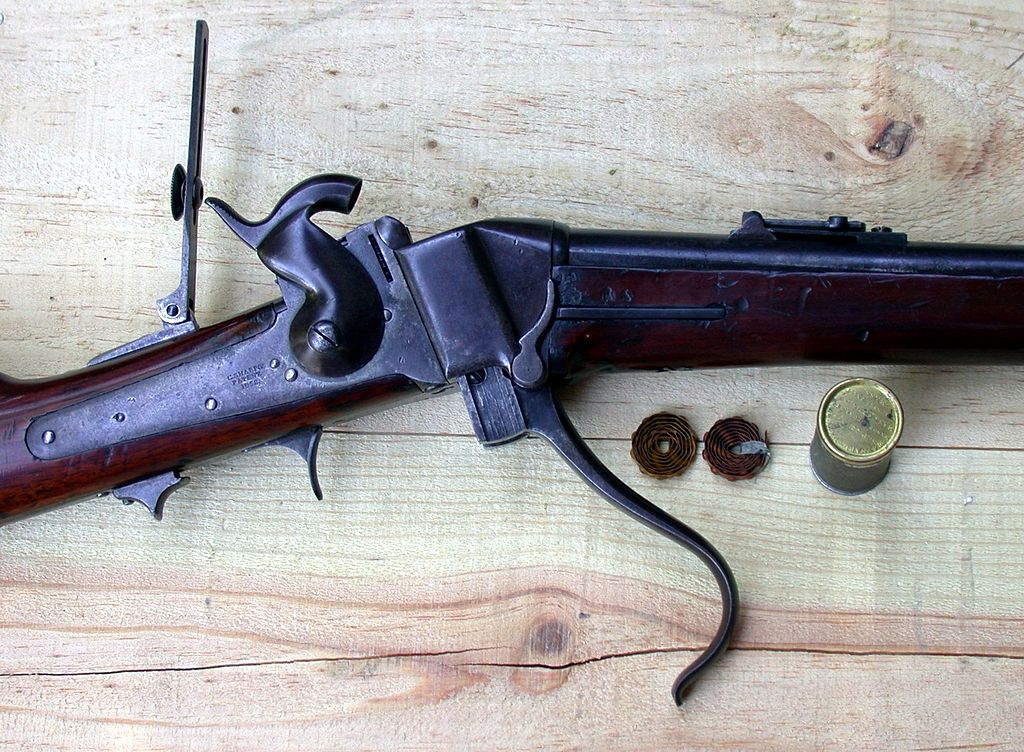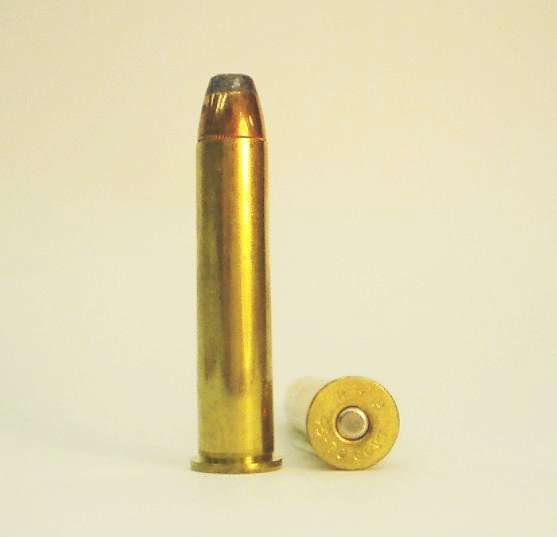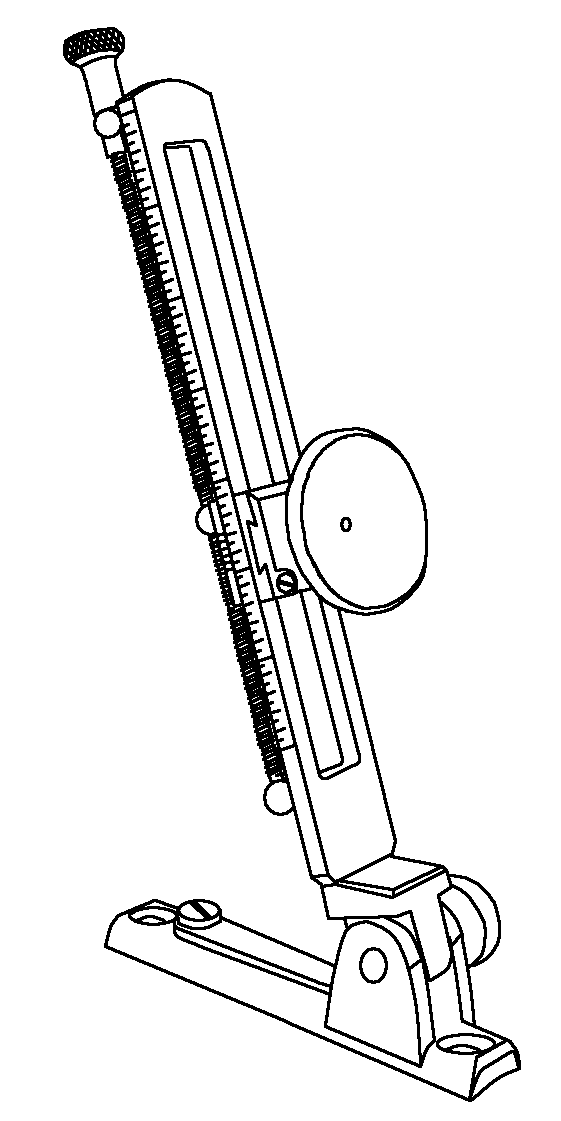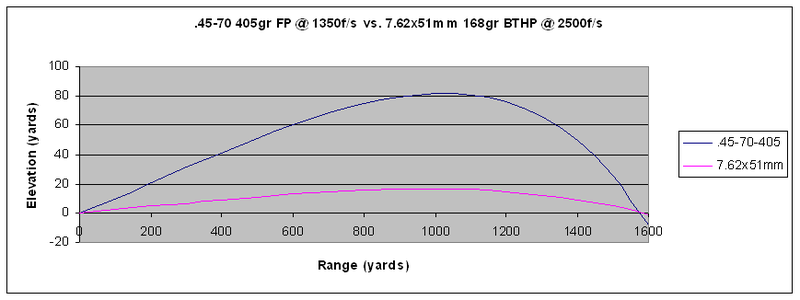| Sharps rifle - Wikipedia
Sharps rifles were a series of large bore single shot
rifles that began with a design by Christian Sharps in 1848 that are renowned
for long range accuracy. By 1874 the rifle was available in a variety of
calibers and had been adopted by the armies of a number of nations and
was one of the few successful designs to transition to metallic cartridge
use.
Reproductions of the Sharps rifle are currently made by
different rifle companies and the rifle has become an icon of the Old West
due to its use in a number of movies and books in the Western genre.

Single shot
Weight 9.5lb
Length 47"
Caliber .52 475 grain with 50 grain cartridge
later converted to .45-70 Government.
Velocity 1200'/sec
In service 1850 - 1881 |
History
Sharps' initial rifle was patented September 12, 1848
and manufactured by A. S. Nippes at Mill Creek, (Philadelphia) Pennsylvania,
in 1850.
The second model used the Maynard tape primer, and surviving
examples are marked Edward Maynard - Patentee 1845. In 1851 the second
model was brought to the Robbins & Lawrence Company of Windsor, Vermont
where the Model 1851 was developed for mass production. Rollin White of
the R&L Co. invented the knife-edge breech block and self-cocking device
for the "box-lock" Model 1851. This is referred to as the "First Contract",
which was for 10,000 Model 1851 carbines - of which approximately 1,650
were produced by R&L in Windsor.
In 1851 the "Second Contract" was made for 15,000 rifles
and the Sharps Rifle Manufacturing Company was organized as a holding company
with $1,000 in capital and with John C. Palmer as president, Christian
Sharps as engineer, and Richard S. Lawrence as master armorer and superintendent
of manufacturing. Sharps was to be paid a royalty of $1 per firearm and
the factory was built on R&L's property in Hartford, Connecticut.
The Model 1851 was replaced in production by the Model
1853. Christian Sharps left the company in 1855 to form his own manufacturing
company called "C. Sharps & Company" in Philadelphia; Richard S. Lawrence
continued as the chief armorer until 1872 and developed the various Sharp
models and their improvements that made the rifle famous. In 1874, the
company was reorganized and renamed "The Sharps Rifle Company" and it remained
in Hartford until 1876, whereupon it relocated to Bridgeport, Connecticut.
The 1874-pattern Sharps was a particularly popular rifle
that led to the introduction of several derivatives in quick succession.
It handled a large number of .40- to .50-caliber cartridges in a variety
of loadings and barrel lengths.
Hugo Borchardt designed the Sharps-Borchardt Model 1878,
the last rifle made by the Sharps Rifle Co. before its closing in 1881.
Reproductions of the paper cartridge Sharps M1859 and
M1863 Rifle and Carbine, the metallic cartridge 1874 Sharps Rifle, and
Sharps-Borchardt Model 1878 are being manufactured today. They are used
in Civil War re-enacting, hunting and target shooting.
Sharps military rifles and carbines

Sharps Model 1852 "Slanting Breech" Carbine,
open for loading, two primer-tapes |
The military Sharps rifle (also known as the Berdan Sharps
rifle) was a falling block rifle used during and after the American Civil
War. Along with being able to use a standard percussion cap, the Sharps
had a fairly unusual pellet primer feed. This was a device which held a
stack of pelleted primers and flipped one over the nipple each time the
trigger was pulled and the hammer fell - making it much easier to fire
a Sharps from horseback than a gun employing individually loaded percussion
caps.
The Sharps Rifle was produced by the Sharps Rifle Manufacturing
Company in Hartford, Connecticut. It was used in the Civil War by the U.S.
Army Marksman, known popularly as "Berdan's Sharpshooters" in honor of
their leader Hiram Berdan. The Sharps made a superior sniper weapon of
greater accuracy than the more commonly issued muzzle-loading rifled muskets.
This was due mainly to the higher rate of fire of the breech loading mechanism
and superior quality of manufacture.
At this time however, many officers were distrustful of
breech-loading weapons on the grounds that they would encourage men to
waste ammunition. In addition, the Sharps Rifle was expensive to manufacture
(three times the cost of a muzzle-loading Springfield rifle) and so only
11,000 of the Model 1859s were produced. Most were unissued |
or given to sharpshooters, but the 13th Pennsylvania Reserves
(which still carried the old-fashioned designation of a "rifle regiment")
carried them until being mustered out in 1864.
Sharps military carbine
The carbine version was very popular with the cavalry
of both the Union and Confederate armies and was issued in much larger
numbers than the full length rifle. The falling block action lent itself
to conversion to the new metallic cartridges developed in the late 1860s,
and many of these converted carbines in .50-70 Government were used during
the Indian Wars in the decades immediately following the Civil War.
Some Civil War-issue carbines had an unusual feature:
a hand-cranked grinder in the stock. Although long thought to be a coffee
mill, experimentation with some of the few survivors suggests the grinder
is ill-suited for coffee. The modern consensus is that its true purpose
was for grinding corn or wheat.
Unlike the Sharps rifle, the carbine was very popular
and almost 90,000 were produced. By 1863, it was the most common weapon
carried by Union cavalry regiments, although in 1864 many were replaced
by 7-shot Spencer carbines. Some Sharps clones were produced by the Confederates
in Richmond. Quality was generally poorer and they normally used brass
fittings instead of iron.
Sharps sporting rifles
Sharps made sporting versions from the late 1840s until
the late 1880s. After the American Civil War, converted Army surplus rifles
were made into custom firearms, and the Sharps factory produced Models
1869 and 1874 in large numbers for commercial buffalo hunters and frontiersmen.
These large-bore rifles were manufactured with some of the most powerful
black powder cartridges ever made. Sharps also fabricated special long-range
target versions for the then-popular Creedmore style of 1,000-yard (910
m) target shooting. Many modern black powder cartridge silhouette shooters
use original and replica Sharps rifles to target metallic silhouettes cut
in the shapes of animals at ranges up to 500 meters. Shiloh Rifle Manufacturing
Company, and C Sharps Arms of Big Timber, Montana, have been manufacturing
reproductions of the Sharps Rifle since 1983 and 1979, respectively.
In film and television
Some movies which showed the strengths of the Sharps rifle
are Billy Two Hats (1974), Rancho Deluxe (1975), Valdez Is Coming (1971),
Quigley Down Under (1990), Pixar's Up and True Grit (2010). In the 1990
western Quigley Down Under, Tom Selleck's title character uses a Sharps
rifle that has a 34" barrel length, as opposed to the standard 30" length.
In Valdez Is Coming, Burt Lancaster's character, Bob Valdez, uses a Sharps
against character Frank Tanner's men at 1200 yards. Glen Campbell's character,
Texas Ranger La Boeuf, is armed with a Sharps and uses it to kill Lucky
Ned Pepper in the famous "Fill your hand, you sonofabitch!" scene in the
1969 movie True Grit.
Theater Crafts Industry went so far as to say, "In Quigley
Down Under, which we did in 1990, the Sharps rifle practically co-stars
with Tom Selleck." This statement was echoed by gunwriters including John
Taffin in Guns and Lionel Atwill in Field & Stream. Firearms manufacturers
such as Davide Pedersoli and Shiloh Rifle Manufacturing Company have credited
these movies with an increase in demand for those rifles.
As a result of the popularity of the film Quigley Down
Under, a Sharps match is held annually in Forsyth, Montana known as the
"Matthew Quigley Buffalo Rifle Match". Originally a 44-inch target was
placed at 1,000 yards for each shooter, remniscent of a scene from the
movie. The match is billed as the "biggest rifle event shooting in Eastern
Montana since the Custer Massacre" and has since evolved into a two-day
competition with eight shots for score on six steel silhouette targets
at ranges from 350 to 805 yards.
On television, the Sharps rifle plays a central role in
the murder investigation in the pilot episode of the Longmire series (2012).
A Sharps is the weapon used in the murder, and its firing action is central
to the climactic action sequence. In the Longmire novel The Cold Dish the
author is incorrect in ascribing the name Sharpshooter to the Sharps. The
term sharpshooter, referring to marksman had its origin in English from
at least 1801 from the German term Scharfschütze.
|
| .45-70- Wikipedia
The .45-70 rifle cartridge, also known as .45-70 Government,
was developed at the U.S. Army's Springfield Armory for use in the Springfield
Model 1873, which is known to collectors as the "Trapdoor Springfield".
The new cartridge was a replacement for the stop-gap .50-70 Government
cartridge which had been adopted in 1866, one year after the end of the
American Civil War.
Nomenclature
The new cartridge was completely identified as the .45-70-405,
but was also referred to as the ".45 Government" cartridge in commercial
catalogs. The nomenclature of the time was based on three properties of
the cartridge:
.45 : nominal diameter of bullet, measured
in decimal inches, i.e., 0.458 inches (11.63 mm);
70 : weight of black powder, measured
in grains, i.e., 70 grains (4.56 g);
405 : weight of lead bullet, measured
in grains, i.e., 405 grains (26.2 g).
The minimum acceptable accuracy of the .45-70 from the
1873 Springfield was approximately 4 inches (100 mm) at 100 yards (91 m),
however, the heavy, slow-moving bullet had a "rainbow" trajectory, the
bullet dropping multiple yards (meters) at ranges greater than a few hundred
yards (meters). A skilled shooter, firing at known range, could consistently
hit targets that were 6 × 6 feet (1.8 m) at 600 yards (550 m)—the
Army standard target. It was a skill valuable mainly in mass or volley
fire, since accurate aimed fire on a man-sized target was effective only
to about 300 yards (270 m).
After the Sandy Hook tests of 1879, a new variation of
the .45-70 cartridge was produced: the .45-70-500, which fired a heavier
500 grain (32.5 g) bullet. The heavier 500-grain (32 g) bullet produced
significantly superior ballistics, and could reach ranges of 3,350 yards
(3,120 m), which were beyond the maximum range of the .45-70-405. While
the effective range of the .45-70 on individual targets was limited to
about 1,000 yards (915 m) with either load, the heavier bullet would produce
lethal injuries at 3,500 yards (3,200 m). At those ranges, the bullets
struck point-first at a roughly 30 degree angle, penetrating three 1-inch
(2.5 cm) thick oak boards, and then traveling to a depth of 8 inches (20
cm) into the sand of the Sandy Hook beach*. It was hoped the longer range
of the .45-70-500 would allow effective volley fire at ranges beyond those
normally expected of infantry fire.
Bullet diameter
Note that while the nominal bore diameter was .45 inches
(11 mm), the groove diameter was actually closer to .458 inches (11.6 mm).
As was standard practice with many early U.S. commercially produced cartridges,
specially-constructed bullets were often "paper patched", or wrapped in
a couple of layers of thin paper. This patch served to seal the bore and
keep the soft lead bullet from coming in contact with the bore, preventing
leading (see internal ballistics). Like the cloth or paper patch used in
muzzleloading firearms, the paper patch fell off soon after the bullet
left the bore. Paper-patched bullets were made of soft lead .450 inches
(11.4 mm) in diameter. When wrapped in two layers of thin cotton paper,
this produced a final size of .458 inches (11.6 mm) to match the bore.
Paper patched bullets are still available, and some black-powder shooters
still "roll their own" paper patched bullets for hunting and competitive
shooting. Arsenal loadings for the .45-70-405 and .45-70-500 government
cartridges generally used groove diameter grease groove bullets of .458
inches (11.6 mm) diameter.
History
 |
The predecessor to the .45-70 was the .50-70-450
cartridge, adopted in 1866 and used until 1873 in a variety of rifles,
many of them percussion rifled muskets converted to trapdoor action breechloaders.
The conversion consisted of milling out the rear of the barrel for the
tilting breechblock, and placing a .50 caliber "liner" barrel inside the
.58 caliber barrel. The .50-70 was popular among hunters, as the smaller
.50 which is larger than the .44 caliber bullet hit harder (see terminal
ballistics) but the military decided even as early as 1866 that a .45 caliber
bullet would provide increased range, penetration and accuracy. The .50-70
was nevertheless adopted as a temporary solution until a significantly
improved rifle and cartridge could be developed.
The result of the quest for a more accurate, flatter shooting
.45 caliber cartridge and firearm was the Springfield Trapdoor rifle. Like
the .50-70 before, it, the .45-70 used a copper center-fire case design.
A reduced power loading was also adopted for use in the Trapdoor carbine.
This had a 55 grain (3.6 g) powder charge.
Also issued was the .45-70 "Forager" round, which contained
a thin wooden bullet filled with birdshot, intended for use hunting small
game to supplement the soldiers' rations. This round in effect made the
.45-70 rifle into a 49 gauge shotgun |
The .45-caliber Springfield underwent a number of modifications
over the years, the principal one being a strengthened breech starting
in 1884. A new, 500 grain (32 g) bullet was adopted in that year for use
in the stronger arm. The M1873 and M1884 Springfield rifles were the principal
small arms of the US Army until 1893.
The Navy used the .45-70 caliber in several rifles, the
M1873 and M1884 Springfield, the Model 1879 Lee Magazine Navy Contract
Rifle, and Model 1885 Remington-Lee Magazine Military Rifle, the last two
being magazine-fed turnbolt repeating rifles. The Marine Corps used the
M1873 and M1884 Springfield in .45-70 until 1897, when supplies of the
new M1895 Lee Navy rifle in 6 mm caliber, adopted two years before by the
Navy, were finally made available.
Realizing that single-shot black-powder rifles were rapidly
becoming obsolete, the US Army adopted the Norwegian-designed .30 Army
caliber as the Springfield Model 1892 in 1893. However, the .45-70 continued
in service with National Guard and the Navy and Marine Corps until 1897.
The .45-70 was last used in quantity during the Spanish-American War, and
was not completely purged from the inventory until well into the 20th century.
Many surplus rifles were given to reservation Indians as subsistence hunting
rifles and now carry Indian markings.
The .45-70 cartridge is still used by the U.S. military
today, in the form of the CARTRIDGE, CALIBER .45, LINE THROWING, M32, a
blank cartridge which is used in a number of models of line throwing guns
used by the Navy and Coast Guard. Early models of these line throwing guns
were made from modified Trapdoor and Sharps rifles, while later models
are built on break-open single-shot rifle actions.
Sporting use
| As is usual with military ammunitions, the .45-70 was
an immediate hit among sportsmen as well, and the .45-70 has survived to
the present day. Today, the traditional 405 grain (26.2 g) load is considered
adequate for any North American big game within its range limitations,
including the great bears, and it does not destroy edible meat on smaller
animals such as deer due to the bullet's low velocity. It is very good
for big game hunting in brush or heavy timber where the range is usually
short. The .45-70, when loaded with the proper bullets at appropriate velocities,
has been used to hunt the African "Big-5". The .45-70 has been loaded and
used to harvest everything from birds to elephant and the cartridge is
still undergoing new development work well over a century after its introduction.
The trajectory of the bullets is very steep, which makes
for a very short point blank range. This was not a significant problem
at the time of introduction, as the .45-70 was a fairly flat-shooting cartridge
for its time. Shooters of these early cartridges had to be keen judges
of distance, wind and trajectory to make long shots; the Sharps Rifle in
larger calibers such as .50-110 was used at ranges of 1,000 yards (910
m). Most modern shooters use much higher velocity cartridges, relying on
the long point blank range, and rarely using telescopic sight's elevation
adjustments, calibrated iron sights, or hold-over. Sights found on early
cartridge hunting rifles were quite sophisticated, with a long sighting
radius, wide range of elevation, and vernier adjustments to allow precise
calibration of the sights for a given range. Even the military "creedmoor"
type rifle sights were calibrated and designed to handle extended ranges,
flipping up to provide several degrees of elevation adjustment if needed.
The .45-70 is a popular choice for black-powder cartridge shooting events,
and replicas of most of the early rifles, including Trapdoor, Sharps, and
Remington single shot rifles, are readily available. The 45/70 is a long
range caliber but it takes adequate knowledge of windage & elevation.
The .45-70 retains great popularity among American hunters for the niche
it is suited for, and is still offered by several commercial ammunition
manufacturers. Even when loaded with modern smokeless powders, pressures
are usually kept low for safety in antique rifles and their replicas. Various
modern sporting rifles are chambered for the .45-70, and some of these
will benefit from judicious handloading of home-made ammunition with markedly
higher pressure and ballistic performance. Others, which reproduce the
original designs will take the original load, but are not strong enough
for anything with higher pressure. In a rifle such as the Siamese Mauser
(commonly converted to fire .45-70 due to it being the only Mauser 98 derivative
designed to feed rimmed cartridges, and the limited availability of ammunition
for its original 8x50mmR chambering) or a Ruger No. 1 single shot rifle,
it can be handloaded to deliver good performance even on big African game. |

A long range tang sight,
commonly used on black-powder
cartridge rifles |

A graph showing the relative trajectories of the .45-70-405
and the 7.62x51 mm/.308 Winchester out to 1500 yards
In addition to its traditional use in rifles, Thompson
Center Arms has offered a .45-70 barrel in both pistol and rifle lengths
for their Contender single shot pistol, arguably the most potent caliber
offered in the Contender frame. Even the shortest barrel, 14 inches, is
easily capable of producing well over 2,000 ft·lbf (2,700 J) of
energy, double the power of most .44 Magnum loadings, and a Taylor KO Factor
as high as 40 with some loads. Recent .45-70 barrels are available with
an efficient muzzle brake that significantly reduces the muzzle rise and
also helps attenuate the recoil. The Magnum Research BFR is a heavier gun
at approximately 4.5 pounds, helping it have much more manageable recoil.
Only with the recent introduction of ultra-magnum revolver
cartridges such as the .500 S&W Magnum have production handguns begun
to eclipse the .45-70 Contender in the rarefied field of big game capable
handguns.
|
| Sharpe's Rifles - movie from the novel Sharpe's Rifles (nothing
to do with the Sharpes rifle above)
This was originally made to be a TV series.
Sharpe's
Rifles
There are several episodes available if you want more.
|
.
All articles submitted to the "Brimstone
Gazette" are the property of the author, used with their expressed permission.
The Brimstone Pistoleros are not
responsible for any accidents which may occur from use of loading
data, firearms information, or recommendations published on the Brimstone
Pistoleros web site. |
|